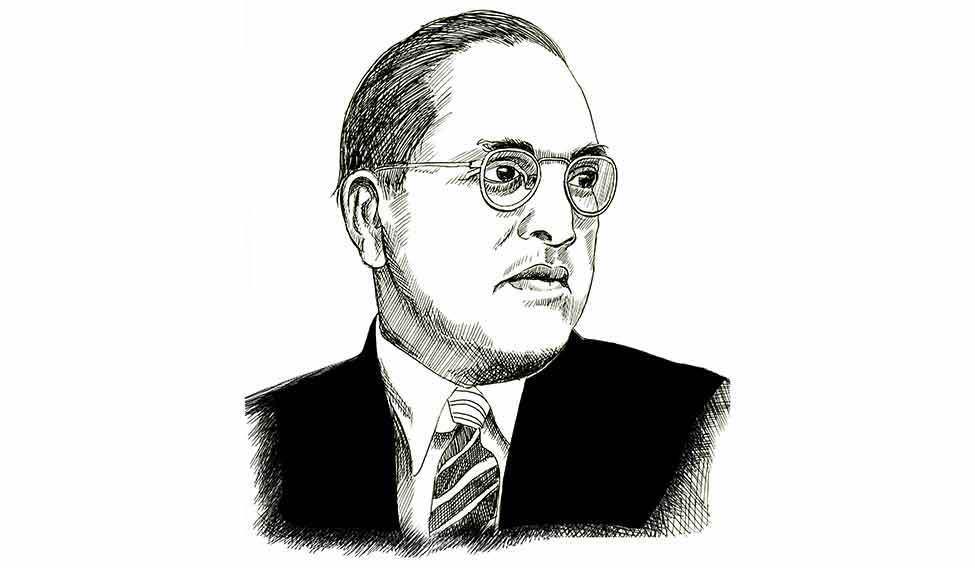
It is easy to read and study about Ambedkar these days. From Wikipedia to databases and from leaflets to multi-volume books, enough sources are available. Although a major chunk of it is in English, there are works in Indian languages as well. Ambedkar has become an inspiration for a large number of academicians and activists across India. His views, in fact, have become a subject of serious discussion all over the world. The problem today is not whether we remember Ambedkar. It is whether we are trying to understand him in the right spirit.
Ambedkar has done much more to Indian society than his predecessors visualised. For example, his guru Jyotiba Phule critiqued the Hindu religion and the Brahminical dominance in an aggressive manner. Phule founded the Satyashodhak Dharma (the religion for truth seekers). Eventually, it lost its sheen, as the post-Phule leadership diluted its mandate into non-Brahminism. Although Maratha king Shahu Chhatrapati took the movement forward as he could empathise with the problems of the dalits, he could not really become their natural leader.
Ambedkar, on the other hand, belonged to the Mahar community, one of the lower castes among the Marathi-speaking communities. Moreover, his immense desire for knowledge and his ability to decipher the caste question gave him prominence in dalit politics across India. Ambedkar’s greatness lies in taking Gandhi heads on and showing grit while dealing with the Congress on the issue of reservation. Gandhi and the Congress had their own brigade of dalit leaders like Jagjivan Ram. But none of them could match Ambedkar’s vision of the emancipation of dalits. From the Simon Commission to the Round Table Conferences to the Pakistan question, Ambedkar presented an alternative worldview. He was made the chairman of the drafting committee of the Constituent Assembly not just because of the generosity and political prudence of Gandhi and his team. It was also a reflection of Ambedkar’s contribution to the discourse on constitutionalism and democracy.
Ambedkar and his team presented a robust Constitution. It represents the vision of the freedom movement and, therefore, calling any single person the architect of the Constitution can be misleading. In the same vein, the Constitution Day, which the government celebrated on November 26 for the first time in history, is unlikely to be seen by Ambedkarites as an event to remember him.
Ambedkar’s political legacy is claimed by a number of parties ranging from the Bahujan Samaj Party to the multiple factions of the Republican Party of India. His intellectual legacy is visible from universities to Facebook pages dedicated to his thought. There is a section of the dalit intelligentsia which feels threatened by the present political disposition and its intention—both overt and covert—to alter the Constitution.
I find these fears unfounded, not because the extremists are not capable of such sinister designs, but because I have faith in the collective conscience of the Indian people. This faith is in sync with the values Ambedkar cherished throughout his life.
Like all great people, Ambedkar was limited by his times. Therefore, a serious critique is required about his views on the annihilation of caste, conversion, reservation and political mobilisation. At present, any such discussion by a non-dalit leads to his ostracisation. While talking of the intolerance of the right, the embedded intolerance of the so-called progressives and bahujanwadis is pushed under the carpet. It does a lot of disservice to the cause of the rights and freedoms Ambedkar championed throughout his life.
Ambedkar’s legacy is inherently pluralistic. Monopolising it is dangerous.
Deepak Pawar teaches civics and politics at University of Mumbai.
Sree Narayana Guru
Man with a mission
One of the great philosophers and social reformers of India, Sree Narayana Guru was born on August 20, 1856 at Chempazhanthi near Thiruvananthapuram, Kerala. He belonged to the Ezhava caste, which was one of the lower castes within the Hindu religion in Kerala at the time. Inspired by the ideals of vedanta, Narayana launched a social reform movement, stressing the importance of cooperation and education. Keeping the uplift of the underprivileged his life's mission, he established educational institutions, opened temples and set up ashrams, where people were free to enter, irrespective of their caste, religion or social standing. At a time when caste was the predominant social marker in Kerala, he gave the state a revolutionary slogan, “one caste, one religion, one God, for mankind.” His magnum opus, Atmopadesa Satakam, is considered to be one of the profound literary and philosophical works in Malayalam. After meeting Narayana at his ashram in Sivagiri, Rabindranath Tagore said he had never seen someone who was at par with him in spiritual attainment. Narayana died on September 20, 1928.





